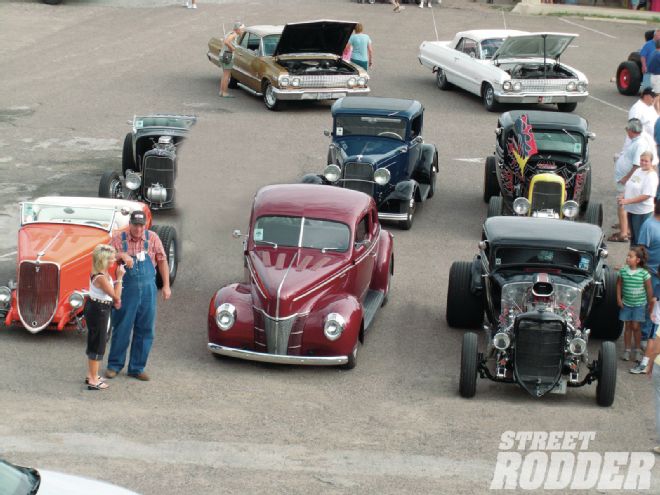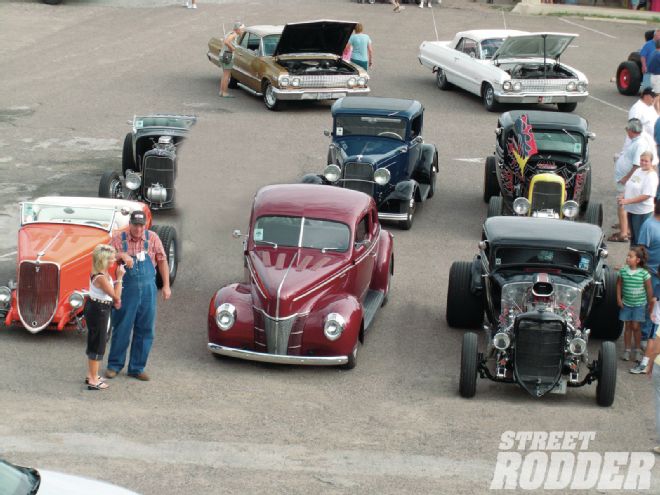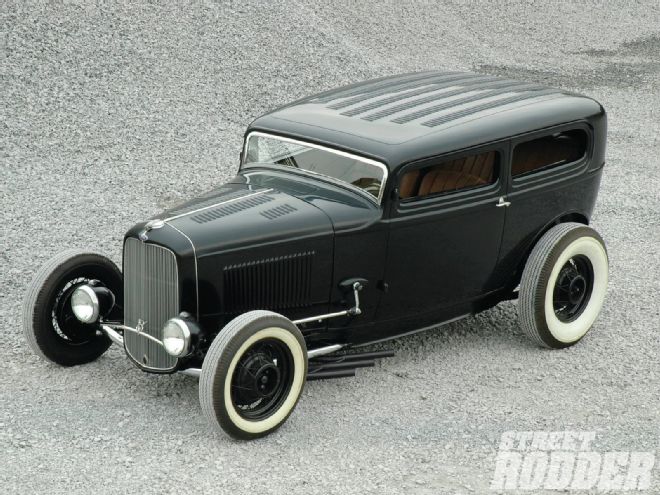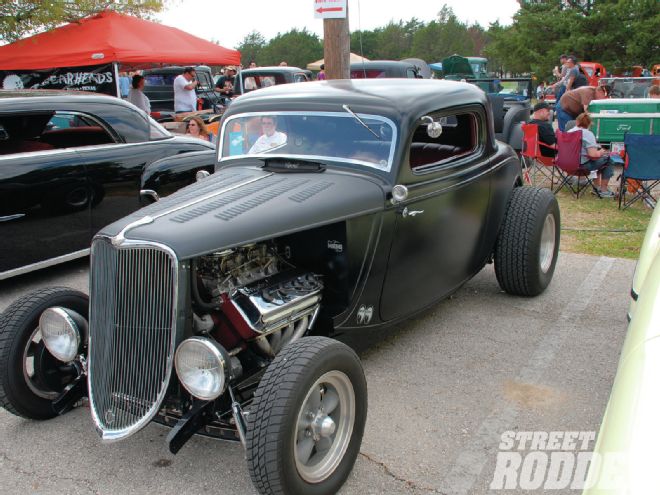
 Originally the one and only Kent Fuller punched the louvers in the hood of Tom Medley’s ’40 Ford. After a devastating fire that nearly destroyed the coupe, Randy Clark and the crew at Hot Rods & Custom Stuff brought the car back from the ashes restoring it exactly—right down to the hood’s unique louver layout.
Originally the one and only Kent Fuller punched the louvers in the hood of Tom Medley’s ’40 Ford. After a devastating fire that nearly destroyed the coupe, Randy Clark and the crew at Hot Rods & Custom Stuff brought the car back from the ashes restoring it exactly—right down to the hood’s unique louver layout.
It’s been said before but it’s worth repeating, real hot rods have louvers. Those little raised slots are the perfect example of form following function.
 If real hot rods have louvers, this ’32 sedan qualifies as one. Louvers in the top may not be practical, but they look cool.
If real hot rods have louvers, this ’32 sedan qualifies as one. Louvers in the top may not be practical, but they look cool.
From the earliest days of the automobile louvers have been used to vent hot air from the engine compartment and when hot rodders began making more heat under the hood the answer was more louvers. But there were other reasons to ventilate a rod’s sheetmetal—in some cases it was to let air out, in others to let it in.
Along with their practical purpose, louvers also provide visual impact and consequently how they look is important—the arrangement, or layout, is critical to their appearance. We’re not about to say there is a right and wrong way to do it, but rather provide food for thought. A case in point is the ventilated nose of Tom Medley’s ’40 Ford. The creator of Hot Rod’s Stroker McGurk, former editor of Rod & Custom, and one of those responsible for the first R&C Street Rod Nationals in Peoria, Illinois, in 1970, he’s been a hot rodder longer than most of us have been alive.
While so much of what is done to a hot rod is subjective, Medley’s longevity gives him a unique, historical perspective on traditional techniques and his artist’s sense of style also comes into play. Those elements certainly had an impact when Kent Fuller punched the hood of Medley’s coupe. The duo agreed that when louvers are in a straight line on a tapered hood it gives the illusion that they come closer together in the rear, sort of like the vanishing point in a drawing. Their approach was to gradually spread the rows of louvers further apart toward the back of the hood. In addition, while the lines of louvers are angled, the back edges, or the openings of the louvers, are aligned and 90 degrees to the hood’s centerline.
 A full hood isn’t necessary for louvers—let the Hemi hang out the sides and punch the top panel. Done in the usual manner, the rows are laid out parallel to the hood’s centerline.
A full hood isn’t necessary for louvers—let the Hemi hang out the sides and punch the top panel. Done in the usual manner, the rows are laid out parallel to the hood’s centerline.
As most of our readers now know, Medley’s coupe was heavily damaged in a fire that reduced the garage it was in to ashes. By all practical standards the ’40 was a write-off, but lots of Medley’s friends came to the rescue and Randy Clark of Hot Rods and Custom stuff pulled off what many thought was impractical, to say the least, and damn near impossible, to be brutally honest.
Every effort was made to reconstruct the coupe exactly as it had been, including the hood Medley was so proud of. Like most things there’s more than one way to lay out louvers and what Medley and Fuller did, and Clark recreated, was complicated and time-consuming. We think the results certainly justify the effort.